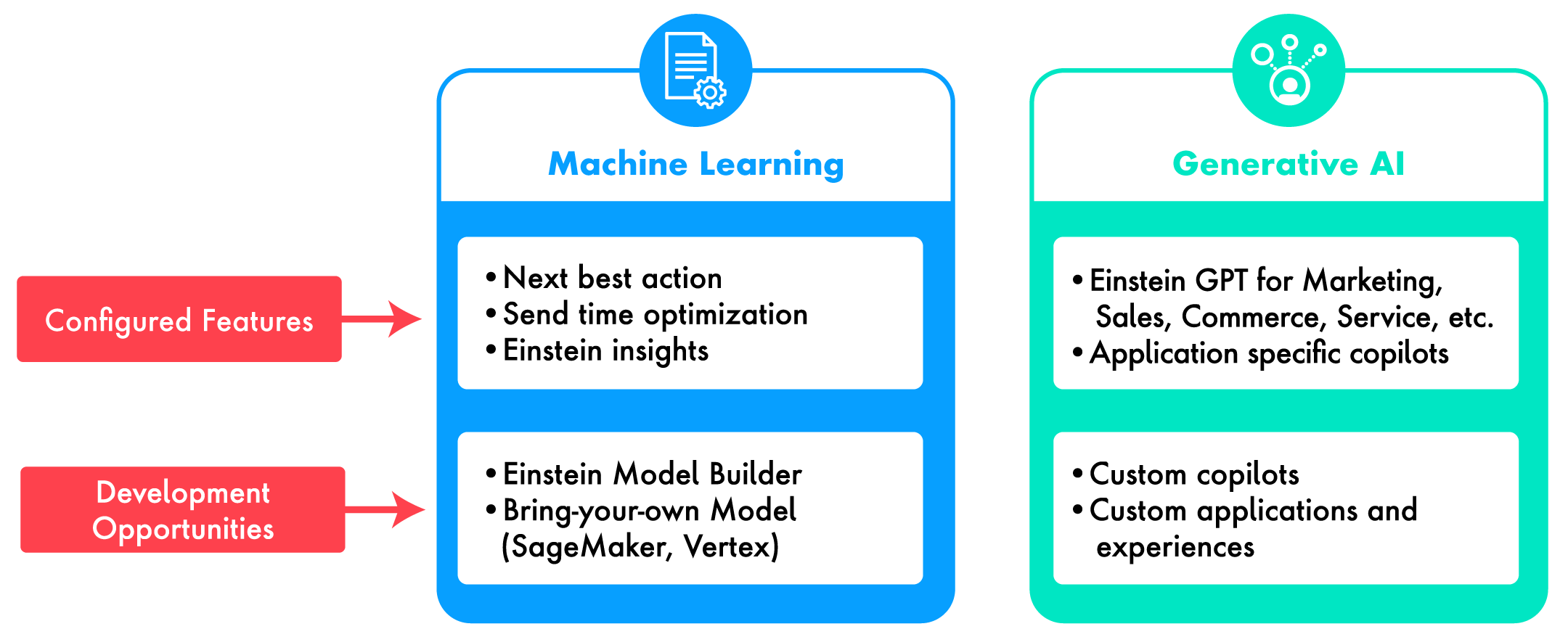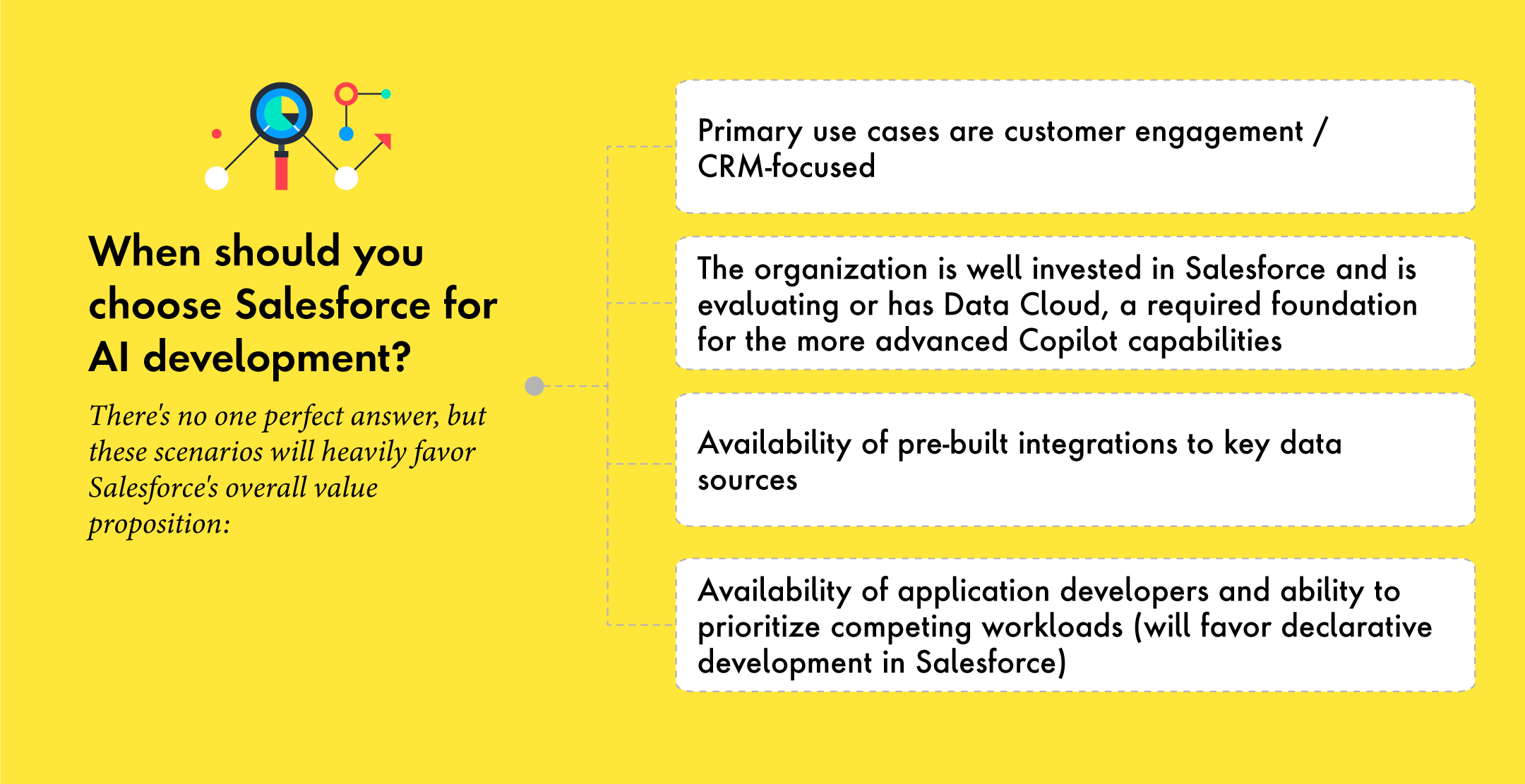Salesforce’s approach to AI uniquely fuses predictive Machine Learning (ML) with generative AI that is available both programmatically and as part of its process framework, grounded by data and backstopped by a unique “Trust” layer.
To understand Salesforce's approach to AI, it is best to think of Salesforce not as a series of applications but as a customer engagement platform. This is Customer Relationship Management (CRM) in the broadest sense, as it captures all interaction points and related engagement with a customer across the customer lifecycle.
As an organization, Salesforce uniquely bridges back-office data and process with front-office engagement and experiences, with acquisitions like Slack, MuleSoft and Tableau providing the connective tissue.
Salesforce’s novel marketplace approach to AI
In the broader context of the AI ecosystem, most of Salesforce's AI solutions sit in the application layer. In other words, Salesforce is more focused on creating end-user value and business impact than training high-parameter Large Language Models (LLMs) or developing custom hardware and infrastructure to run them. Because businesses invest in different tech stacks, Salesforce is taking more of a "marketplace" approach to AI development, enabling companies to choose from existing models (OpenAI, Anthropic, Vertex, etc.) or to bring their own. A robust set of developer tools (declarative and code-extended) will help enable the organization's preferred model.








